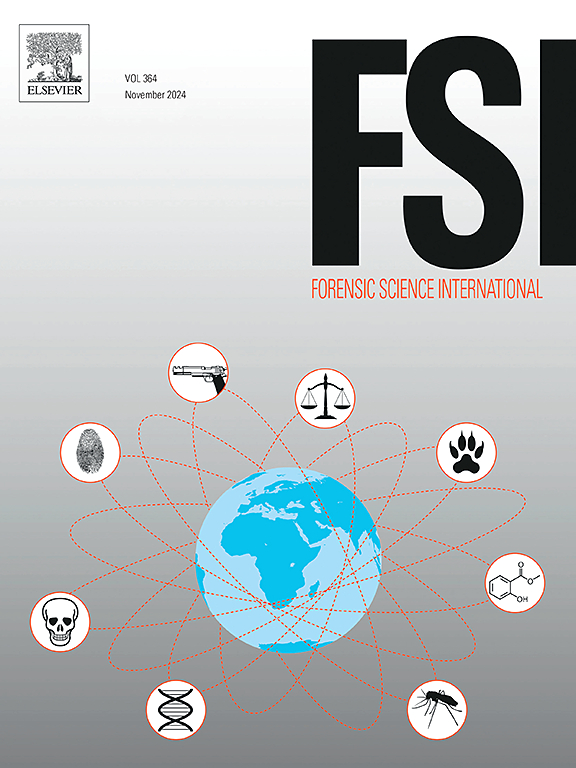Development of a novel latent deoxyribonucleic acid detection technique for crime scene investigation using quartz tuning fork-based biosensor technology
IF 2.2
3区 医学
Q1 MEDICINE, LEGAL
引用次数: 0
Abstract
The forensic Deoxyribonucleic Acid (DNA) fingerprinting is a tool for investigating crime scenes by identifying/tracing criminals and linking crime scenes. However, in cases where experts are unable to detect and identify any biological traces or human-derived cells at the crime scene or while testing the samples in the laboratories, all the advantages offered by forensic laboratories lose their significance. It becomes a waste of time, effort, and resources allocated to these laboratories. Therefore, there is an urgent need for technology that enables crime scene experts to detect latent and concealed human traces before they leave the scene. This work aims to provide a novel qualitative and quantitative approach to tackle the challenges faced by crime scene experts in identifying challenging traces using instant, low-cost, uncomplicated, portable, sensitive detection technology by introducing the Quartz Tuning Fork (QTF)-based biosensor technology as an initial screening technique. A probe layer functionalized the QTF-based biosensor to capture DNA fragments. The response of the functionalized QTF sensor to different concentrations of DNA was measured as a resonance frequency shift, which increased as the concentration of DNA increased. The QTF response for DNA was also confirmed by measuring the resonance frequency of the functionalized QTF after capturing DNA and after washing with DNA removal solution (DNAZap). The resonance frequency of the QTF immersed in DNA was increased after immersion in the DNA removal solution. Finally, functionalized QTF showed a high sensitivity for the DNA fragments with a limit of detection of 140 pg/µl.
求助全文
约1分钟内获得全文
求助全文
来源期刊

Forensic science international
医学-医学:法
CiteScore
5.00
自引率
9.10%
发文量
285
审稿时长
49 days
期刊介绍:
Forensic Science International is the flagship journal in the prestigious Forensic Science International family, publishing the most innovative, cutting-edge, and influential contributions across the forensic sciences. Fields include: forensic pathology and histochemistry, chemistry, biochemistry and toxicology, biology, serology, odontology, psychiatry, anthropology, digital forensics, the physical sciences, firearms, and document examination, as well as investigations of value to public health in its broadest sense, and the important marginal area where science and medicine interact with the law.
The journal publishes:
Case Reports
Commentaries
Letters to the Editor
Original Research Papers (Regular Papers)
Rapid Communications
Review Articles
Technical Notes.
 求助内容:
求助内容: 应助结果提醒方式:
应助结果提醒方式:


